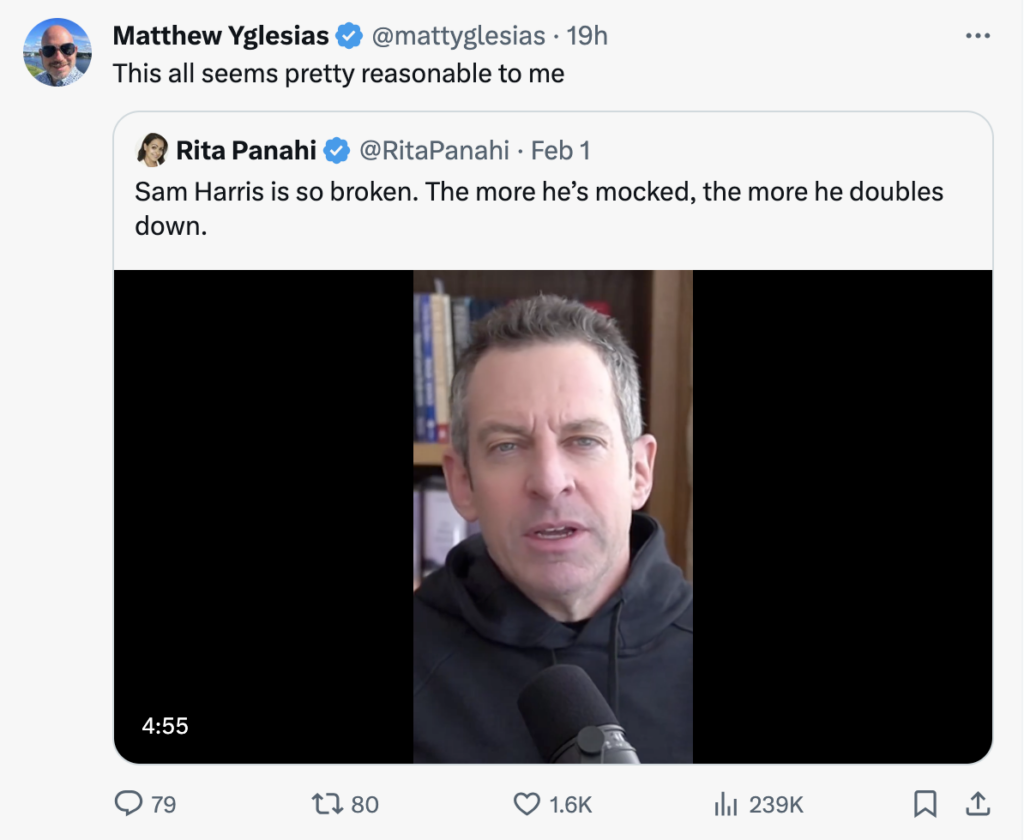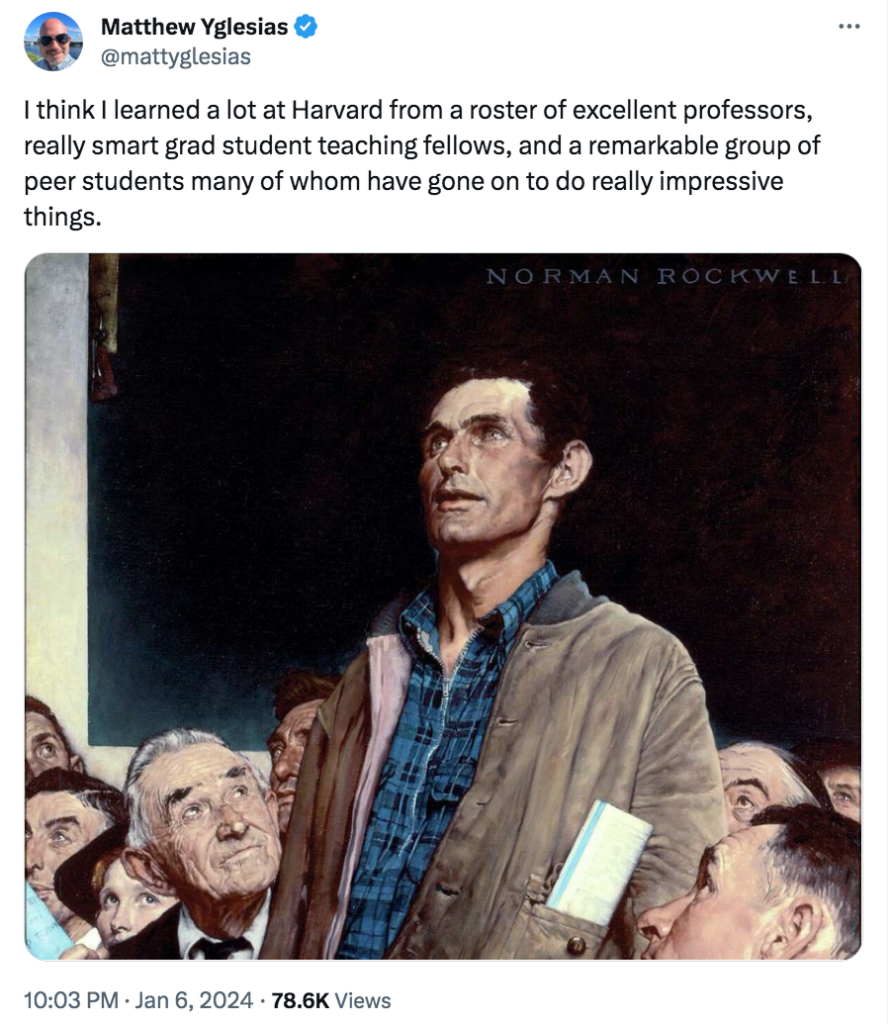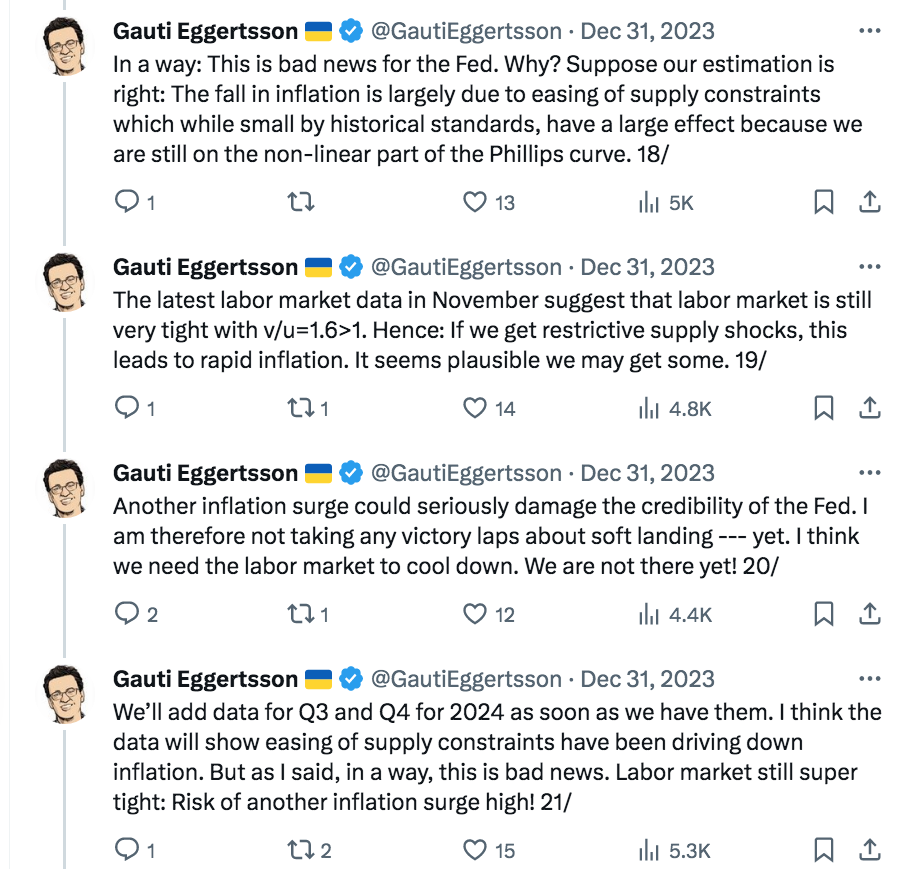The highlight of my fourth quarter was books, not films. I hugely enjoyed a long string of Gene Wolfe novels (the 4-part Book of the Long Sun and the 3-part Book of the Short Sun.). In general, I don’t read much sci-fi. For recent writers, I lean toward people like Sebald, Pamuk, Bolano, Marias, Knausgaard, Murakami, Houllebecq, etc. Gene Wolfe is the only sci-fi/fantasy writer that I would put in that class. Soon, I plan to reread his New Sun series. I had always assumed that I would enjoy Bruno Schulz, but only recently got around to reading him. I was right—he has some of the same appeal as people like Walser and Pessoa. I also read an interesting book entitled The MANIAC, which is a fictional portrayal of the life of John von Neumann and the birth of AI.
2023:Q4 films
Newer Films:
Anatomy of a Fall (France) 3.6 Watching this courtroom drama made me realize how much of my life has been spent watching Anglo-American courtroom dramas, and how little has been spent watching continental style trials. Why shouldn’t the judges (i.e. jurors) ask questions? Good movie, but I wouldn’t have any interest is seeing it a second time.
Blackberry (Canada) 3.4 This “dramedy” works better as comedy than drama, as it’s not quite believable. But it’s a very entertaining film about culture conflict between alphas and betas in the corporate world.
American Fiction (US) 3.4 I can’t recall seeing another Hollywood that had politics so close to my own views—anti-bigotry and anti-woke. Funny in places, but hews a bit too closely to the standard Hollywood formula. The basic problem with Hollywood drama is that they pander to the audience. Most Americans lack the patience to watch truly great dramas from Iran and East Asia, because they are too “slow”. So Hollywood overstuffs their dramas with a mix of comedy and tear-jerking scenes, and has the characters change their personality every few minutes to liven things up.
Taylor Swift: Era Tour (US) 3.3 Your rating will depend on how much you like her music. Interesting to see this a few months after Barbie, which appeals to the same demographic. She’s a bit too polished and perfect for my taste; I’d rather watch a more spontaneous performer like Janis Joplin, Patty Smith or Bjork. But there’s no denying her talent as a songwriter/performer. Her music seems aimed at empowering awkward teenage girls—making them feel better about their lives. I suppose in utility terms that’s just about the most useful thing that any human being can do.
An aging boomer like me couldn’t help thinking about how the music industry has changed. In the 1970s, I saw big acts in small intimate spaces. In 1978, Springsteen played in a movie theater in Chicago seating about 1000 people, and I paid $10 for the ticket. (Even adjusting for inflation, that’s pretty low—and he’d already produced some popular albums.) I think the most I ever paid was about $20 to see the Stones (with the Eagles as an opening act.) But those shows lacked the dazzling special effects you see today.
In the late 1960s, I assumed the future would bring space travel to other planets and flying cars. Instead we got no progress in space travel, but phenomenal progress in the sound and lighting at musical concerts, and far better restaurants. You can never predict which areas will see great innovations.
Beyonce (US) 3.3 Saw this right after the Taylor Swift concert. The two women are different in all sorts of ways, including race, body type and artistic strengths (songwriting vs. performance), but both share an ability to manage their careers, something that’s probably a lot harder than it looks (given the number of artists that flame out on drugs, etc.)
The Boy and the Heron (Japan) 3.2 Miyazaki seems to have lost his magic. Time to retire?
Stonewalling (China) 3.0 The social commentary is mildly interesting, but stylistically it seems like a pale imitation of the work of people like Hou Hsiao-hsien and Jia Zhangke
Older Films:
Breaking the Waves (Denmark/Scotland , 1996, CC) 3.9 I find it hard to rate a film like this, as I can’t really say I enjoyed it. But after suffering for 2 ½ hours, when one emerges into the light in the final ten minutes it feels like you’ve seen one of the greatest films of the past 30 years. I saw this when it first came out, and understood a lot more on the second viewing. Like Kubrick, Lars von Trier doesn’t pander to the audience. He gives you his vision, whether you like it or not.
Dairy of a Country Priest (France, 1951, CC) 3.8 Another masterpiece that wrestles with spiritual themes. In the end, it’s the cinematography, not the ideas, which make this early Bresson film so successful. It could have worked equally well as a silent film.
The Repast (Japan, 1951, CC) 3.8 The first of a series of excellent films that Naruse directed during the 1950s. I don’t know of any other male director who has as much sympathy for female characters. Those expecting the histrionics of Hollywood dramas will be disappointed, but there’s a subtle beauty here for those willing to look beyond the surface.
Hour of the Wolf (Sweden, 1968, CC) 3.7 As with almost all horror films, it’s a bit uneven. But there are enough great scenes that it’s a must for film buffs.
Woman of Tokyo (Japan, 1933, CC) 3.7 Just as novels are more popular than short stories, long films are more popular than films of less than an hour. Both of those facts reflect (in part) the poor taste of the general public. This film packs a world of drama into its less than 47 minute running time. Why should you watch a short silent Japanese film from 1933? Because it was directed by Ozu. (His post-war films would have been almost equally effective as silent films.)
Nine Queens (Argentina, 2000, CC) 3.6 I saw a bunch of confidence artist films last month, and this was one of the best. These films work by lying to the audience in the opening sections, in the hope that after the “big reveal” viewers won’t think too much about what they’ve seen during the previous 2 hours. Like film noir, it’s hard to make a bad con man film. The plots are generally quite entertaining, and then it comes down to which ones have the best acting, dialogue, settings, etc.
Rich and Strange (UK, 1931, CC) 3.6 Probably my favorite of the early (pre-1934) Hitchcock films. A very amusing commentary on how adults are often just overgrown children. The final 20 minutes is especially good.
The Inheritance (Japan, 1962, CC) 3.5 Stylish B&W cinematography in this enjoyable story of greedy people scheming to get an inheritance from a greedy rich guy who is dying of cancer.
Love in the Afternoon (France, 1972 , CC) 3.5 I didn’t like this quite as much as some of the other Rohmer films—perhaps that’s because his style now seems a bit repetitive.
Murder! (UK, 1930, CC) 3.5 Hitchcock is discovering the possibilities of cinema in the sound era. Some of his experiments are too obvious, and don’t hold up well. He’s most effective here when he’s least showy. Good plot, although the film would have been more impressive in 1930 than today, as these ideas have been repeated in dozens of other films.
The Skin Game (UK, 1931, CC) 3.4 Obscure early Hitchcock film, based on a John Galesworthy play. Even his weaker efforts are well worth seeing.
Blast of Silence (US, 1961, CC) 3.4 I had no business enjoying this crude B-noir, but somehow found it to be pretty mesmerizing. It’s amusing to watch scenes in Greenwich Village folk music clubs while thinking about the fact that people in 1961 had no idea what was about to happen.
Hangover Square (UK, 1945, CC) 3.4 In 1945, audiences were willing to accept a pretty retrograde view of mental illness. I wonder how big a role TV and film have played in educating the public on the topic? Despite the silly plot, the stylish visuals in this noir pack a lot of information into just 77 minutes. I saw this the day after watching The Sting, and was reminded that this sort of B&W film is far more interesting to look at than most of the color films that came a few decades later. In terms of plot, this film is similar to Hitchcock’s The Lodger. It might have also worked better as a silent film.
The Match Factory Girl (Finland, 1990, CC) 3.4 Try to make “It’s a Wonderful Life” out of this young woman’s existence! I prefer Kaurismaki’s more humorous films, but this one has its moments.
New Rose Hotel (US, 1998, CC) 3.4 Christopher Walken is always worth watching. Also stars Willem Defoe and Asia Argento.
Chameleon Street (US, 1989, CC) 3.4 Although this is a low budget production of uneven quality, it is definitely worth seeing. What impresses me the most about this film is the writer, director and lead actor Wendell Harris Jr., who seems to possess a wide range of talents. Why didn’t he go on to have a great career? Despite the 100% positive rating on Rotten Tomatoes, he couldn’t get financing to do a second film. Perhaps he was ahead of his time.
A Woman Under the Influence (US, 1974, CC) 3.4 Critics liked this one more than I did. I suppose it was quite innovative at the time, but today doesn’t seem particularly distinctive. I saw it a day after Breaking the Waves, another film about a troubled woman. That film still seems quite innovative.
Matchstick Men (US, 2003, CC) 3.3 The sort of entertaining film that Hollywood is good at producing, but not really the sort of film that Ridley Scott does best. The plot is too preposterous to be believed, or even to suspend one’s disbelief for the whole 2 hours. A poor man’s The Usual Suspects.
The Last Run (US/Spain, 1971, CC) 3.3 George C. Scott plays an aging criminal who tries for one last caper—with somewhat predictable results. I like its leisurely pace, unlike so many modern crime films.
The Sting (US, 1973, CC) 3.2 This Paul Newman/Robert Redford film was state of the art Hollywood entertainment back in 1973, as people were impressed by the plot twists and the handsome period sets. Today, it seems a bit dated. There’s only so much you can do without a great director—and there aren’t many great directors. Still, it’s worth watching if you’ve never seen it. From certain camera angles, the young Robert Redford looked uncannily like Brad Pitt.
Three on a Match (US, 1932, CC) 3.1 Mildly entertaining pre-code drama. The main reason to watch is to see Bette Davis and Humphrey Bogart very early in their careers. David is hardly recognizable, but Bogart is already Bogart.
Roadblock (US, 1951, CC) 3.0 So-so low budget noir. A noir has to be pretty bad in order to be not worth watching.
The Devil, Probably (France, 1977, CC) 3.0 It’s not easy to make a good movie about apathetic, disenchanted youth, and Bresson doesn’t really succeed. While his other films have a timeless quality, this one is very much a product of the late 1970s. But I was 22 years old in 1977, the same age as the characters in this film, and nostalgia kept me watching what I could immediately see was going to be a disappointing film. The late 1970s and early 1980s were the decadent end of the late 1960s youth movement—recall that Jonestown was 1978. But it was also arguably the freest period in human history. Soon afterward, AIDS crushed the sexual revolution and then technology put us all into a giant Panopticon. And fifty years from now, even 2023 will seem like a period of incredible freedom.
Imagine a world where evangelical Christians vote Democratic and the Southern Baptist leadership is pro-choice on abortion. Yes, that world actually existed in the late 1970s.
Safe in Hell (US, 1931, CC) 3.0 Steamy pre-code drama. It’s fairly ordinary, but features an appealing actress.
Sneakers (US, 1992, CC) 2.9 This thriller stars Robert Redford and is every bit as bland as Redford’s face.
Paprika (Japan, 2006, CC) 2.8 I saw this when it first came out, but it disappointed on second viewing. Started very well with 10 minutes of strong visuals, and then completely ran out of ideas.
Daughter of the Dragon (US, 1931, CC) 2.5 One of the first Hollywood films to star two Asian actors. The Chinese man is played by a Japanese actor, perhaps the most wooden performance I’ve ever seen. But the Chinese woman is played by Anna May Wong, who adds a bit of charisma to the film. Otherwise, it’s forgettable nonsense.








